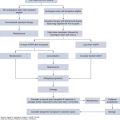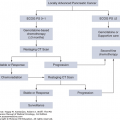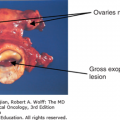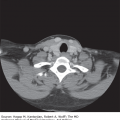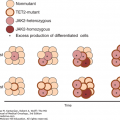THE NEED FOR PALLIATIVE CARE
Despite significant progress in our understanding of cancer biology and the development of novel therapeutics, most patients with advanced cancer still die of their disease (1). In addition to the significant mortality, cancer contributes to significant morbidity for cancer patients and their families.
The growth of cancer can result in multiple symptoms by direct invasion, obstruction, compression, inflammation, effusions, and paraneoplastic syndromes. Moreover, cancer predisposes patients to various complications, such as infections, bleeding, thrombosis, and fractures. Cancer treatments such as surgery, radiation, chemotherapy-targeted agents, and immunotherapy can also cause multiple adverse effects involving the cardiac, pulmonary, gastrointestinal, hematologic, musculoskeletal, neurological, endocrine, and dermatologic systems. Living with cancer also means that patients not only have to face their own mortality but also have to deal with many psychosocial stresses related to the uncertainties along the disease trajectory. They have to cope with changes in their bodily function, body image, ability to engage in daily activities, and family dynamics. Finally, many patients and families express significant existential issues and financial concerns. Taken together, the direct cancer effects, cancer treatments, and psychosocial issues all contribute to a large number of physical and psychological symptoms, resulting in a decrease in quality of life and increase in caregiver burden (2).
The literature has consistently demonstrated that cancer patients, particularly those with advanced disease, experience an average of 8 to 12 symptoms (3,4), suggesting that many symptoms are underrecognized, underdiagnosed, and undertreated. In addition to physical, psychological, and existential concerns, patients and families often have informational and decision-making needs (4).
Over the past few decades, palliative care has matured as a discipline that specializes in addressing the multidimensional care needs of patients and their families. Palliative care
is an approach that improves the quality of life of patients and their families facing the problem associated with life-threatening illness, through the prevention and relief of suffering by means of early identification and impeccable assessment and treatment of pain and other problems, physical, psychosocial and spiritual. … Palliative care is applicable early in the course of illness, in conjunction with other therapies that are intended to prolong life, such as chemotherapy or radiation therapy, and includes those investigations needed to better understand and manage distressing clinical complications.(5)
The key domains of palliative care include the following: building relationships and rapport, assessing and managing symptoms, addressing coping, establishing illness understanding, discussing cancer treatments, discussing end-of-life planning, and engaging family members (6).
Multiple studies have demonstrated improved patient outcomes associated with palliative care. In a meta-analysis, Higginson et al found that palliative care was associated with a significant improvement in pain (odds ratio [OR], 0.38; 95% CI, 0.23-0.64) and other symptoms (OR, 0.51; CI, 0.30-0.88) (7). Recent randomized controlled trials also demonstrated that palliative care involvement was associated with improvement in health-related quality of life compared to routine oncologic care (8,9). Evidence also supports the role of palliative care in enhancing patient satisfaction (10) and caregiver satisfaction (11). Through facilitating end-of-life discussions, providing spiritual care, and offering an alternative to aggressive care, palliative care also contributes to improved quality of end-of-life care (12,13,14). This in turn leads to a reduction in the cost of care in the last days of life (15).
Specialist palliative care is provided in four care settings: inpatient consultation teams, acute palliative care units, outpatient clinics, and community-based palliative care. Inpatient consultation teams represent the backbone of palliative care in the United States, with 92% of cancer centers designated by the National Cancer Institute (NCI) and 74% of non–NCI-designated cancer centers reporting their presence (16). Acute palliative care units provide intensive symptom control for patients and families in severe distress and facilitate transition of care (17,18,19). The mortality rate varies widely, but the average is approximately 30% (20). Outpatient clinics are present in 59% of NCI-designated cancer centers and in 22% of non–NCI-designated cancer centers (16). They are key to early palliative care access and provide longitudinal supportive care concurrent with active cancer treatments (21). There is growing emphasis to increase the availability of these programs. Finally, the community branch of palliative care is tailored for patients as they approach the end of life (ie, 6 months or less) (22), when they often have decreased ability to travel back and forth to the hospital. These individuals may benefit from outreach by the palliative care team in the form of home palliative care or a transition to home-based or inpatient hospice programs.
In the 1990s, several first-generation randomized controlled trials compared palliative care interventions to usual care; however, they did not consistently demonstrate improved outcomes (23,24,25). A systematic review revealed significant methodological limitations among these studies, such as contamination, underpowered sample size, attrition, and poor adherence (11). The variable timing of introduction of palliative care, the lack of standardization of palliative care programs, the heterogeneous study duration, and the inconsistent outcome measures all made it difficult to clearly identify the intervention effect associated with palliative care.
Over the past decade, second-generation studies with improved designs have provided more evidence to support not only the need for specialist palliative care but also the early involvement for patients with advanced cancer. We review the key studies supporting involvement of palliative care early in the disease trajectory.
Temel et al conducted a landmark randomized controlled trial involving 151 patients with stage IV non–small cell lung cancer comparing routine oncology care with or without early palliative care referral (8). Patients were eligible if they were within 8 weeks of diagnosis of metastatic cancer and had an Eastern Cooperative Oncology Group (ECOG) performance status of 0 to 2. Early palliative care involvement was associated with significant improvement in the primary outcome Trial Outcome Index in the Functional Assessment of Cancer Therapy–Lung (FACT-L) scale at 12 weeks (59 vs 53, P = .009). The secondary outcomes, including the Lung Cancer Subscale (21 vs 19, P = .04); FACT-L total score (98 vs 92, P = .03); Hospital Anxiety and Depression Scale (HADS) depression (16% vs 39%, P = .01); Patient Health Questionnaire 9 (PHQ-9) (4% vs 17%, P = .04); aggressive end-of-life care (33% vs 54%, P = .05); documentation of resuscitation preferences (53% vs 28%, P = .05); and overall survival (11.6 months vs 9.8 months; hazard ratio 0.59, P = .01) also improved significantly. Largely based on this study, the American Society of Clinical Oncology published a provisional clinical opinion in 2012 supporting the integration of palliative care into standard oncologic care (26).
Bakitas et al examined the effect of a nurse-led palliative care intervention in a randomized controlled trial (9). A total of 322 patients within 8 to 12 weeks of their diagnosis of advanced lung, gastrointestinal, genitourinary, or breast cancer were randomized to the intervention arm or usual care arm. Specifically, the study intervention was led by advanced practice nurses and consisted of four structured educational and problem-solving sessions followed by monthly telephone follow-up sessions addressing various aspects of care, such as symptom management, crisis prevention, communication strategies, advance care planning, and timely referral to palliative care and hospice teams. Over time, palliative care was associated with a significant improvement in health-related quality of life (Functional Assessment of Chronic Illness Therapy for Palliative Care [FACIT-PC], P = .02), depression (Center for Epidemiological Studies Depression Scale [CES-D], P = .03). However, symptom burden (Edmonton Symptom Assessment Scale [ESAS], P = .06), resource use at the end of life (intensive care unit admission, P > .99; emergency room visits, P = .53), and palliative care team referral (P = .32) were not significant different between the intervention and control groups. Because the study intervention was primarily nursing based, the lack of involvement of other disciplines, such as medicine, may have contributed to the lack of a significant difference in some observed outcomes.
Zimmermann et al randomized, using a cluster randomized design, 461 patients in 24 medical oncology clinics to either early involvement of palliative care or routine oncology care (10). Unlike the two previous clinical trials that enrolled patients from time of diagnosis, patients in this study had stage III/IV lung, gastrointestinal, genitourinary, breast, or gynecological cancer with an estimated survival of 6-24 months. The primary outcome, Functional Assessment of Chronic Illness Therapy–Spiritual Well-Being (FACIT-Sp) at 3 months, improved in the early palliative care arm (1.6) and decreased in the control arm (−2.0), although the difference was not statistically significant (3.6, P = .07). At 4 months, a significant improvement was observed (2.5 vs −4.0, difference = 6.4, P = .006). Secondary outcomes also favored early palliative care by 4 months, including Quality of Life at the End of Life (QUAL-E) scale (3.0 vs −0.5, difference = 3.5, P = .003), symptom burden measured by the ESAS (−1.3 vs 3.2, difference = −4.4, P = .05), and patient satisfaction with care assessed by FAMCARE-P16 (3.7 vs −2.4, difference = 6.0, P < .0001). The median survival in the early palliative care arm was 340 days, suggesting that these patients accessed palliative care relatively early in the disease trajectory.
Because the studies mentioned compared early palliative care to routine oncologic care, it was unclear if late palliative care was as effective as early palliative care. This question was partly addressed in a recent retrospective cohort study examining the quality of end-of-life care indicators in the last 30 days of life among patients who died of advanced cancer at MD Anderson Cancer Center (14). Patients referred to palliative care 3 months or more before death had significantly lower rates of emergency room visits (39% vs 68%, P < .001), hospital admission (48% vs 81%, P < .001), and hospital death (17% vs 31%, P = .004) compared with a patient seen by the same palliative care team less than 3 months before death. Similar differences were also reported using 6 months as the cutoff. Moreover, outpatient palliative care consultation was associated with significantly improved outcomes compared with inpatient palliative care consultation (Table 57-1). In multivariate analysis, improved quality of end-of-life care was associated with female gender (OR, 1.63; P = .027), palliative care outpatient referral (OR, 2.4; P < .001), and nonhematologic malignancies (OR, 2.6; P = .02).
| Within the Last 30 Days of Life | Outpatient Referral, n = 169 (%) | Inpatient Referral, n = 199 (%) | P Value |
|---|---|---|---|
| Any emergency room visit | 80 (48) | 135 (68) | <.001 |
| 2 or more emergency room visits | 18 (11) | 51 (26) | <.001 |
| Any hospital admission | 87 (52) | 171 (86) | <.001 |
| 2 or more hospital admissions | 17 (10) | 47 (24) | .001 |
| More than 14 days of hospitalization | 14 (8) | 40 (20) | .002 |
| Hospital death | 30 (18) | 67 (34) | .001 |
| Any ICU admission | 7 (4) | 28 (14) | .001 |
| ICU death | 3 (2) | 10 (5) | .15 |
| Chemotherapy and targeted agent use | 41 (25) | 55 (28) | .55 |
Taken together, these studies suggest that early outpatient palliative care is associated with improved health-care outcomes. Table 57-2 summarizes some key questions related to palliative care delivery.
Stay updated, free articles. Join our Telegram channel

Full access? Get Clinical Tree




